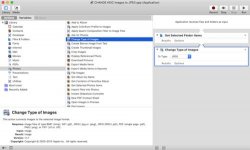jarski
Veteran
I recently bought new iPhone and noticed its not taking photos anymore in JPEG, but HEIC. Seems that iPhones have been doing this a while now. This made me think few things:
- Will JPEG be "orphaned" in longer run? Risk of loosing photos if software support ends at some point?
- Possible format chaos in some point? JPEG has been a sort of standard for a long while now, and forced everything to move same direction, which has been a good thing (IMO).
- Should I consider converting my photos to HEIC at some point? Looks like space savings would be considerable (important with cloud storage)
About this iPhone purchase, my previous was version 4. Its been refreshing to return to Appleland after long break abroad 🙂
- Will JPEG be "orphaned" in longer run? Risk of loosing photos if software support ends at some point?
- Possible format chaos in some point? JPEG has been a sort of standard for a long while now, and forced everything to move same direction, which has been a good thing (IMO).
- Should I consider converting my photos to HEIC at some point? Looks like space savings would be considerable (important with cloud storage)
About this iPhone purchase, my previous was version 4. Its been refreshing to return to Appleland after long break abroad 🙂


